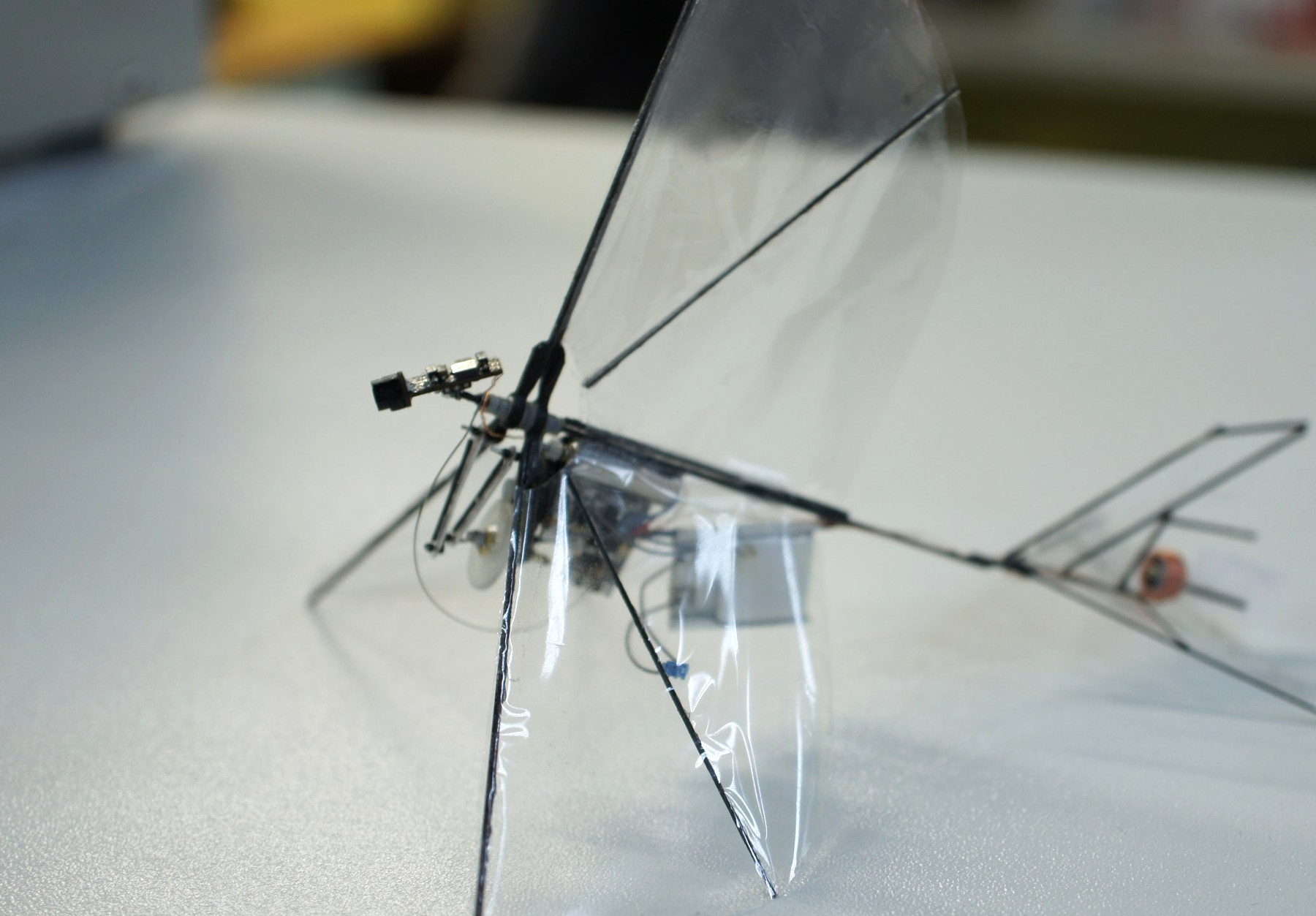 Preamble a: in May of this year our hackspace (MakeItLab, Ekaterinburg) is 5 years old ! In this regard, we decided to open a series of publications “Hackspace in faces” or “Hackspace with a human face” - and tell not only about robots and “pieces of iron”, but also about interesting people who are behind them. And in this task we will be helped by a “student, Komsomol, sportswoman” - Anastasia, - a journalism student who is interested in robotics.
Preamble a: in May of this year our hackspace (MakeItLab, Ekaterinburg) is 5 years old ! In this regard, we decided to open a series of publications “Hackspace in faces” or “Hackspace with a human face” - and tell not only about robots and “pieces of iron”, but also about interesting people who are behind them. And in this task we will be helped by a “student, Komsomol, sportswoman” - Anastasia, - a journalism student who is interested in robotics.Few people know how many places there are in Yekaterinburg where people with completely different interests can gather, find like-minded people and create. For example, one of such places in our city is the hackspace “MakeItLab”. Hackspace / Hackerspace (eng. Hackerspace) is a high-tech club, a kind of creative space for people who are passionate about technology, IT, electronics, robots and physics. For someone of this kind, pastime is only a hobby, for someone it gradually develops into a profession.
A large number of interesting and versatile people, already professionals in their field, collects hackspace. So, Stepan Glushkov (aka Seplus), one of the participants of this project, told us about his projects, the history of his path in the field of robotics and electronics, and also shared his opinion about the relevance of specialists in this field in the future.
- Stepan, from what and how long has your passion for the field of radio electronics, engineering started?- Probably from birth. As far as I can remember, I was always surrounded by some constructors. I always made something and always wanted it to move. When I was 6 years old, I disassembled a radio-controlled car, pulled out a motor and attached it to a boat. I got a boat with a motor that floated in the bathroom. This was the first thing I did with electronics. Further, I just continued to do it, develop. At the age of 11, I tried to solder, at 12 I went to the radio circle, I collected very simple amplifiers from old transistors. Then I chose a radio technical school (URTC named after A. Popov). I graduated with a degree in radio and apparatus engineering. Then he studied at the remote department of the radio equipment UPI. And then all my life I worked in this area. My whole life is this sphere. And the main thing is that I am interested all my life.
 Fragment of a video on assembling a walking robot tarakaška from paper clips, thanks to which Stepan was found by “people from hackspaces”. 2011.“How did you get to Hackspace?”
Fragment of a video on assembling a walking robot tarakaška from paper clips, thanks to which Stepan was found by “people from hackspaces”. 2011.“How did you get to Hackspace?”- Since 2009, I began to actively appear on the Internet, I have a channel on YouTube. Thanks to this, in 2013, guys from the local community of engineers, programmers in the face of
nemilya , noticed me. They told me that in Yekaterinburg there is such a Hackspace “MakeItLab”, which recently appeared, invited me to it. Since there are not very many people in Yekaterinburg who are very passionate about something in this area, we began to communicate together. People who are seriously engaged in robotics in our city have somehow heard about us. Hackspace thus turned out to be the point of convergence of people with common interests. Also, when you can communicate with other people, share knowledge and experience - it increases efficiency. Cooperation always increases the efficiency of each individual.
- Tell me about your main project. What are you doing now?- At this stage, the main project is the creation of a set called “Collect a radio-controlled ornithopter itself”, although I do not consider myself to be a specialist in ornithopters. I know a little more about them than an ordinary person, but for me it's still a hobby. The ornithopter is a flying device, heavier than air and flies like birds, insects. The word itself consists of the ancient Greek roots of the words "bird" and "wing." And ornithopters really fly like birds. This is great, but certainly not effective. Aircraft. Modern quadcopters are many times better in all respects, but they are not as cute as mechanical birds.
A person buys a set, it includes all the necessary parts, a film of wings, gears, radio modules, and a control panel. Following the video instructions, you can assemble a mechanical bird and then launch it. This is the main project for today, which I want to implement.
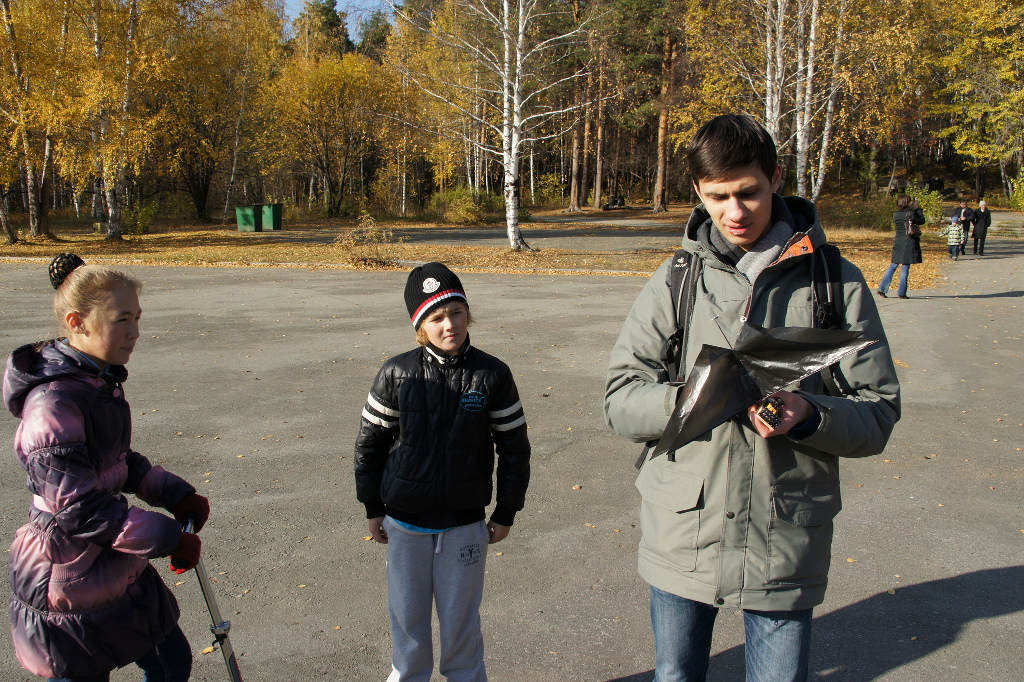 Launch of ornithopter in the park, 2013- Is there a commercial idea here?
Launch of ornithopter in the park, 2013- Is there a commercial idea here?- Yes, maybe I would like it to be a small business in the future. In the future, it would be cool to make a line of toys, which will not only be a toy, but also perform a teaching function. This is a toy that teaches how to collect something. I would also like to give people an accessible set for creating radio-controlled devices. Now there are many radio control systems on the market, but they are quite expensive. And there is no cheap thing on the market. And you need to create a cheap set.
 Ornithopter MKII in Hackspace, 2013.- What audience are these toys designed for? More on children or adults?
Ornithopter MKII in Hackspace, 2013.- What audience are these toys designed for? More on children or adults?- No, such constructions are designed just not for children, rather from 16-18 years and older. This is for people who are already able to concentrate, follow the instructions and work well with their hands. The child will most likely be perceived as just a toy, he will get bored, and he will break and throw out. This is not for this audience. Perhaps this is even more for adults who are obsessed with electronics or radio controls who like it.
 All mechanics and electronics for ornithopters are assembled by the Stepnoi manually, since for such small sizes, standard elements are usually difficult to find.- Are there any other projects at the moment?
All mechanics and electronics for ornithopters are assembled by the Stepnoi manually, since for such small sizes, standard elements are usually difficult to find.- Are there any other projects at the moment?- There are other projects that I deal in part with or plan to deal with in my great number. For example, now I want to set a world record. I want to make the world's smallest radio-controlled machine. At the moment I already have a project that has taken place - it is a micromachine with a video camera and a remote control, 30mm long. But now I want to make a radio-controlled car, the length of a fingernail. It would really be a record and you could even apply to the Guinness Book of Records. In general, a million projects in my head, flying butterflies, skolopendry robots. I have always been interested in robots that look like animals, especially insects. Therefore, there are many such ideas. This is my hobby, but I would like it to be more than just a hobby.
 Micromachine radio control. 2016 year
Micromachine radio control. 2016 year Micromachine in nature- What do you personally see the benefits of what you do?
Micromachine in nature- What do you personally see the benefits of what you do?- I do something mostly just because I like it. Not one of those people who will go to work and whine that she does not like. For me, it's a pleasure. I really enjoy it when I do cool things that look complicated in the eyes of others. In particular, this micromachine. If we talk about the benefits to society, I have not done anything supernatural for the time being.
- Would you like to?- In fact yes. I would like to make very compact devices that could turn some ideas about technology. But I am pleased to realize that I, living in our high-tech society, am part of the people who create this society. And I feel very comfortable in the modern world. I do not dream of living in the 18th or 19th century.
- Where and who do you work?- My work - I collect various electronic devices to order.
- Is your own interest or commercial basis more important to you?- Naturally, I want this to be my hobby, even more profession, to bring me income. This is the best when your favorite work brings money. I aspire to this and this project with ornithopters, this is the desire to realize myself through a favorite cause.
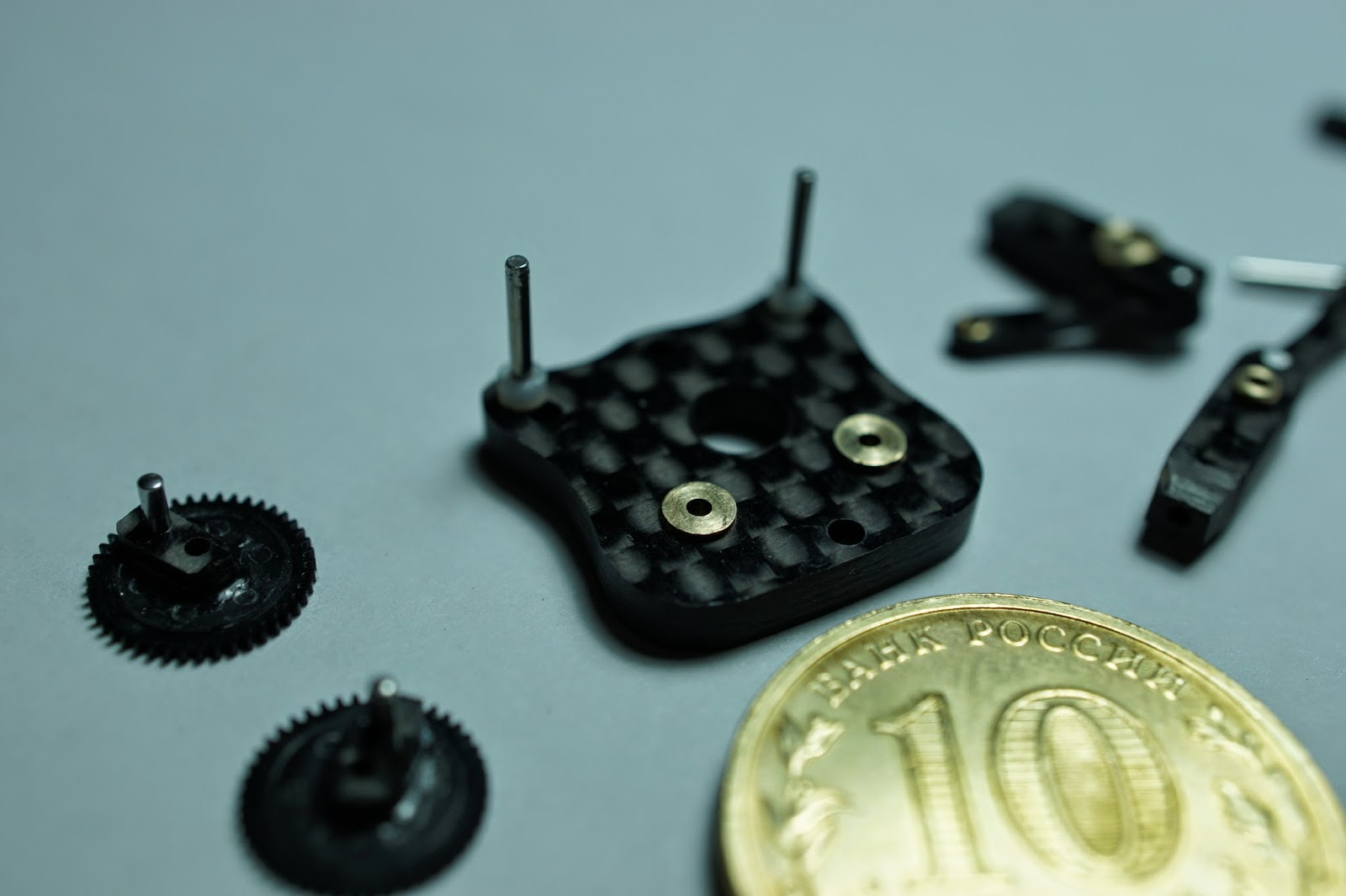 To create some micro-elements of the ornithopter, Stepan sometimes has to create / modify the equipment itself.
To create some micro-elements of the ornithopter, Stepan sometimes has to create / modify the equipment itself.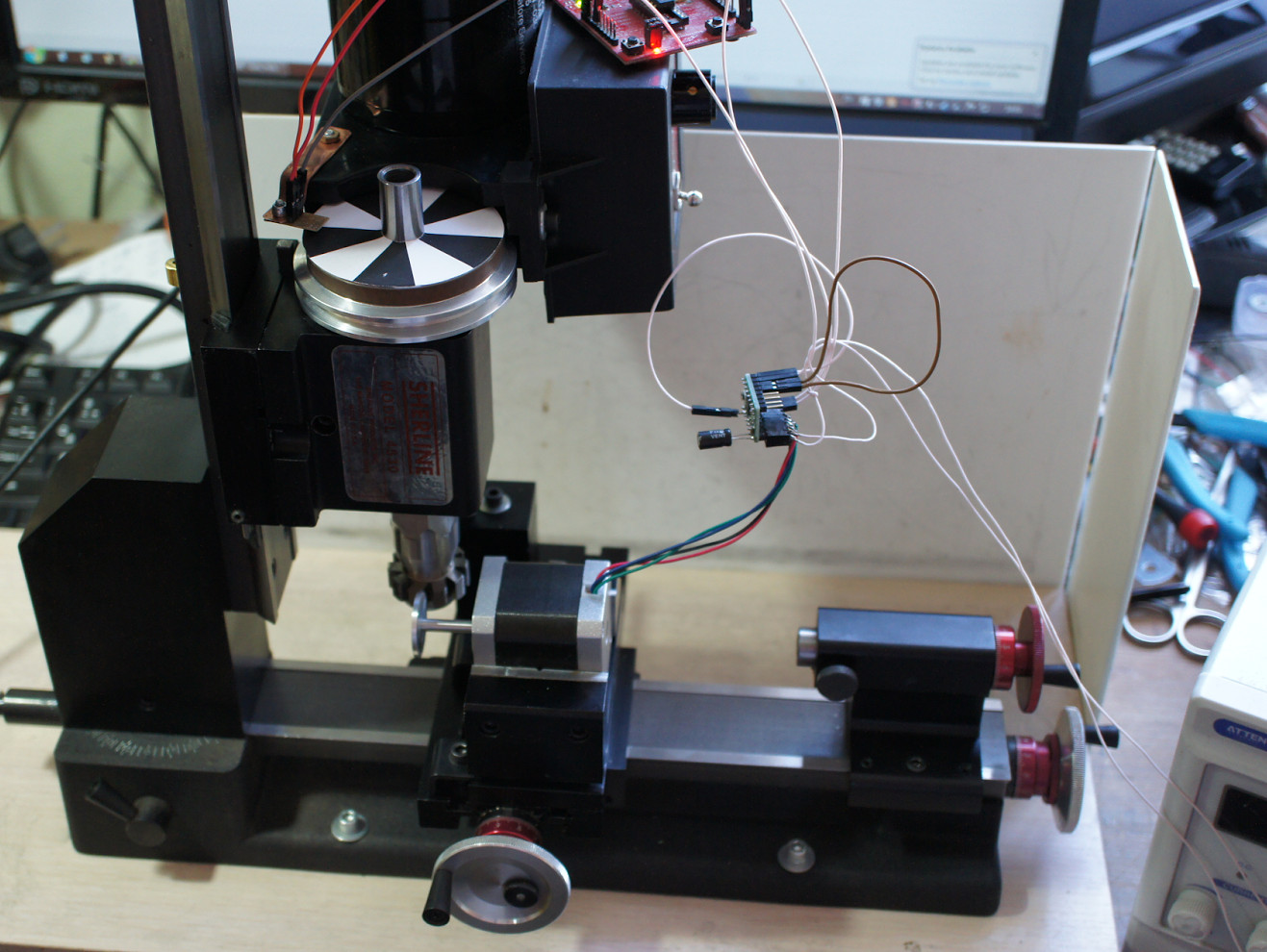 A machine with a gear-cutting attachment created by Stepan for making gears.
A machine with a gear-cutting attachment created by Stepan for making gears.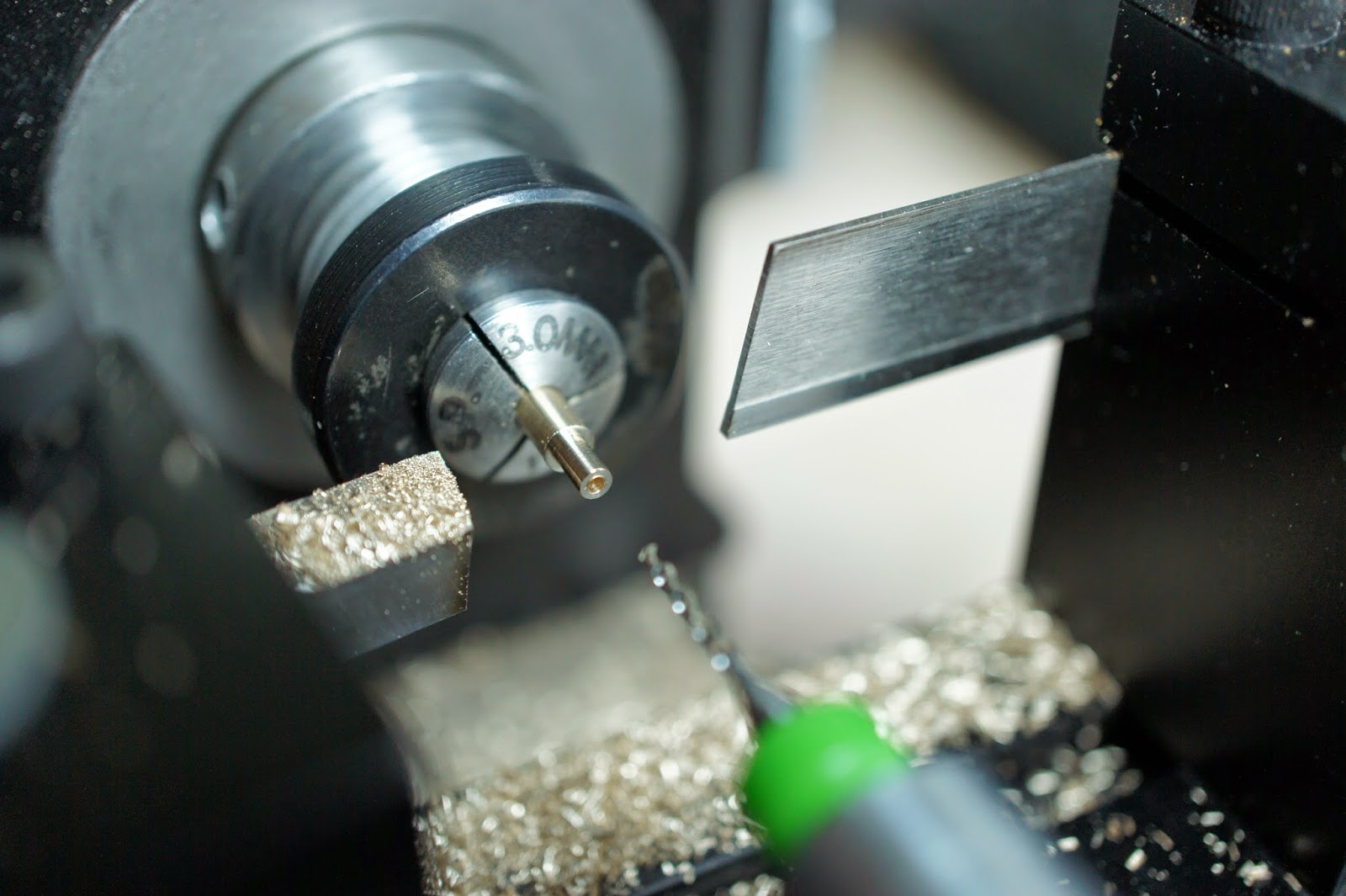 Lathe, Stepan’s production of mini sleeves for the ornithopter mechanism.- And how are the incomes now?
Lathe, Stepan’s production of mini sleeves for the ornithopter mechanism.- And how are the incomes now?- At the moment, the main income is work for other people, the creation of electronic devices on order. There is also a YouTube channel, but I do not plan to use it for promotional purposes. This is just a poster, shows what I do, the desire to show myself to the world
[editor's note: Stepan’s video blog has more than 2.5M views] . Of course, if the desire in the future to create cool devices and earn big money on it.
 One of Stepan's ornithopters, 2018- What development prospects do you see in the field of robotics, electronics?
One of Stepan's ornithopters, 2018- What development prospects do you see in the field of robotics, electronics?- Prospects are great. Over the past 10 years there has been a big leap in miniaturization and electronics and mechanics. All that we see today in science fiction films, little spy beetles and so on, all this can become a reality. This is exactly what I'm interested in.
- What can you advise people who want to start developing in this area?- I am a person who did not start from a specific threshold. I have always cooked this, it is difficult for me to teach other people to begin. For me it has always been gradually and very consistently. But, I believe, it will be academically correct to first get acquainted with simple devices, how current flows, what principles electricity works, the simplest elements. In my opinion, you just need to start with the simplest and understand, and understand. It's like drawing: first you draw a circle, and then you get an owl. The main thing is to understand and report that in 1 day it will not work. Need patience and perseverance.
Anastasia Kovalenko